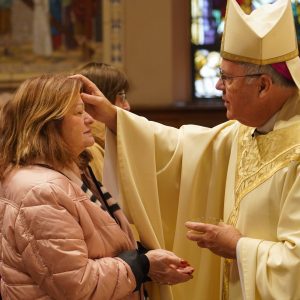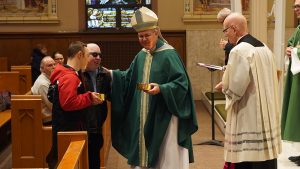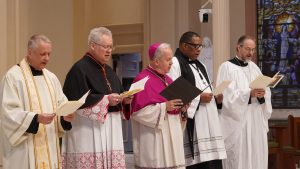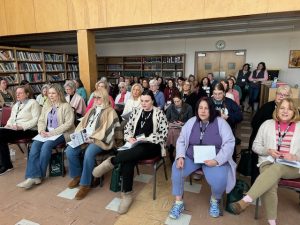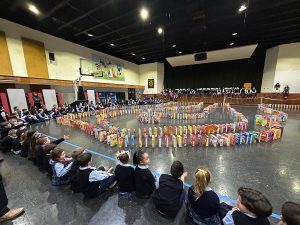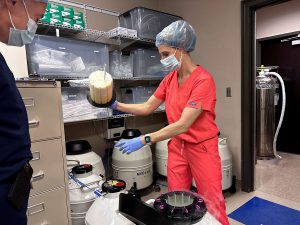SCRANTON – With temperatures barely breaking 20-degrees and gusty winds making it feel much colder, more than 150 people braved the frigid conditions to show support – and pray – for Scranton’s immigrant and refugee communities Monday, Feb. 17, 2025.
Faith leaders from the Catholic Church, Temple Hesed, and the Islamic Center of Scranton were among those offering prayers on Courthouse Square for the continued dignity and respect for all people.
“In recent weeks, our community has been overshadowed by anxiety and fear, yet tonight we come together to re-affirm our commitment to compassion,” Alexandra Marroquin said in welcoming the crowd to the event. “Let us stand united, drawing strength from one another and the values we hold dear.”
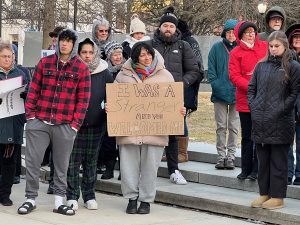
The crowd sang the hymn, “All Are Welcome,” after an opening prayer and listening to excerpts of a statement from Bishop Mark J. Seitz of El Paso, chairman of the United States Conference of Catholic Bishops Committee on Migration.
The vigil was sponsored by several community organizations, including the Scranton Area Multifaith Ministerium; Sisters, Servants of the Immaculate Heart of Mary; Catholic Social Services of the Diocese of Scranton; Saint Teresa of Calcutta Parish; Saint Ann’s Passionist Monastery; Temple Hesed; Islamic Center of Scranton; Marywood University; and The University of Scranton.
Rev. Jonathan Kuhar, pastor, Saint Teresa of Calcutta Parish, read Bishop Bambera’s recent statement on immigration, “Upholding the Dignity of All,” and offered a prayer that everyone may hear the cry of refugees, immigrants, the homeless and the lost.
“Grant us now the grace of hospitality, bless our eyes that we may see the needs of our brothers and sisters, and fill our hears with the wisdom we need to recognize the human dignity of all people, and bless our hands so that we may continue to have the honor of doing your work in this world,” Father Kuhar prayed.
Representatives of the Jewish community said the biblical directive of welcoming the stranger is mentioned 36 times in the Torah, more than any other commandment.
“We, like many of you here, believe that revelation is not something that happened ‘once upon a time’ and is something of the past,” Rabbi Daniel J. Swartz of Temple Hesed said. “It is continuing to unfold with all of us today. When we listen to Scripture, we listen to it not as someone listening to someone else’s words, but as someone who is being addressed by those words.”
After about 30 minutes, the group walked to Saint Luke’s Episcopal Church on Wyoming Avenue and continued the prayer service inside hearing the recent words of Pope Francis and three personal reflections from those who have migrated to the United States.
Ushu Mukelo came to the United States after spending 12 years in a refugee camp in Uganda. He said the bible demands us all to take action on this issue.
“We must respect the dignity of every human being,” Mukelo said.

